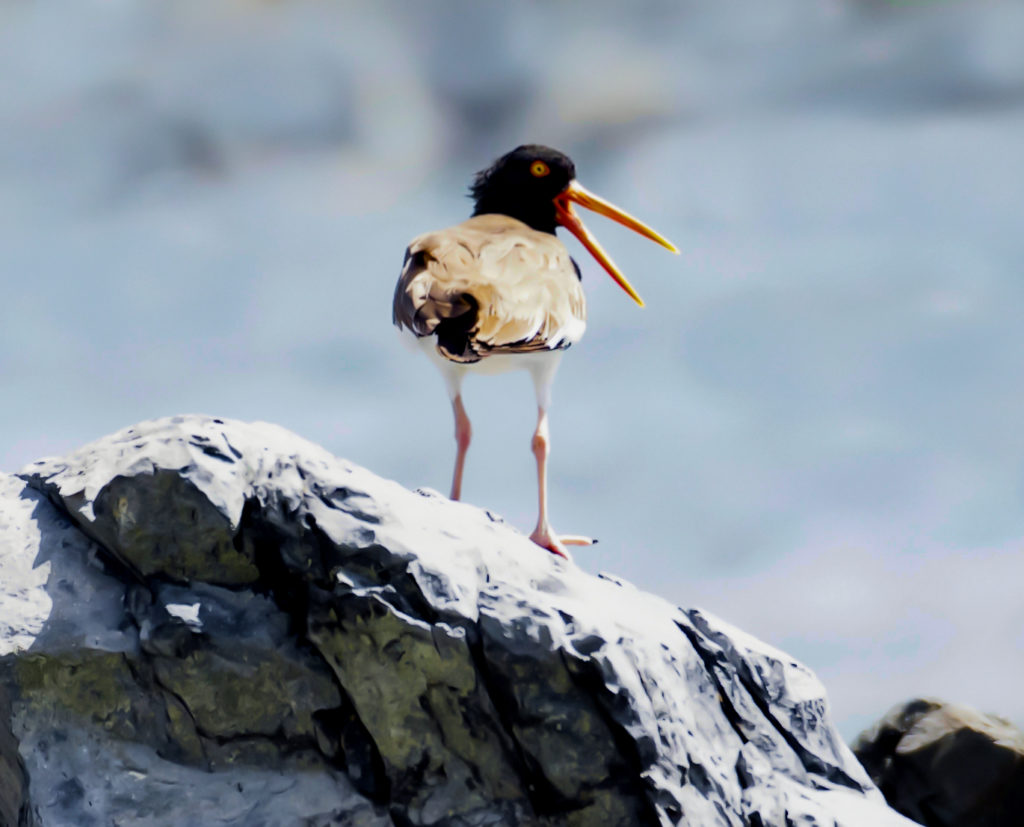
The bright-billed oystercatchers living in the Caribbean (Haematopus palliatus) generally stay out of sight, mostly sticking to isolated beaches and rocky offshore islands.
When a pair of oystercatchers first showed up on the shoreline near our house, we heard their sharp piping cries before we actually spotted them. They were walking around a patch of coral rubble at low tide, looking for exposed shellfish. They were quite skittish and flew off to a small island nearby before we could get too close.
When I got home and looked at my photos close up, I was amazed to see how colorful their faces are – yellow eyes with black centers surrounded by red-orange rings that match their red-orange bills. Why so dramatic, I wondered.
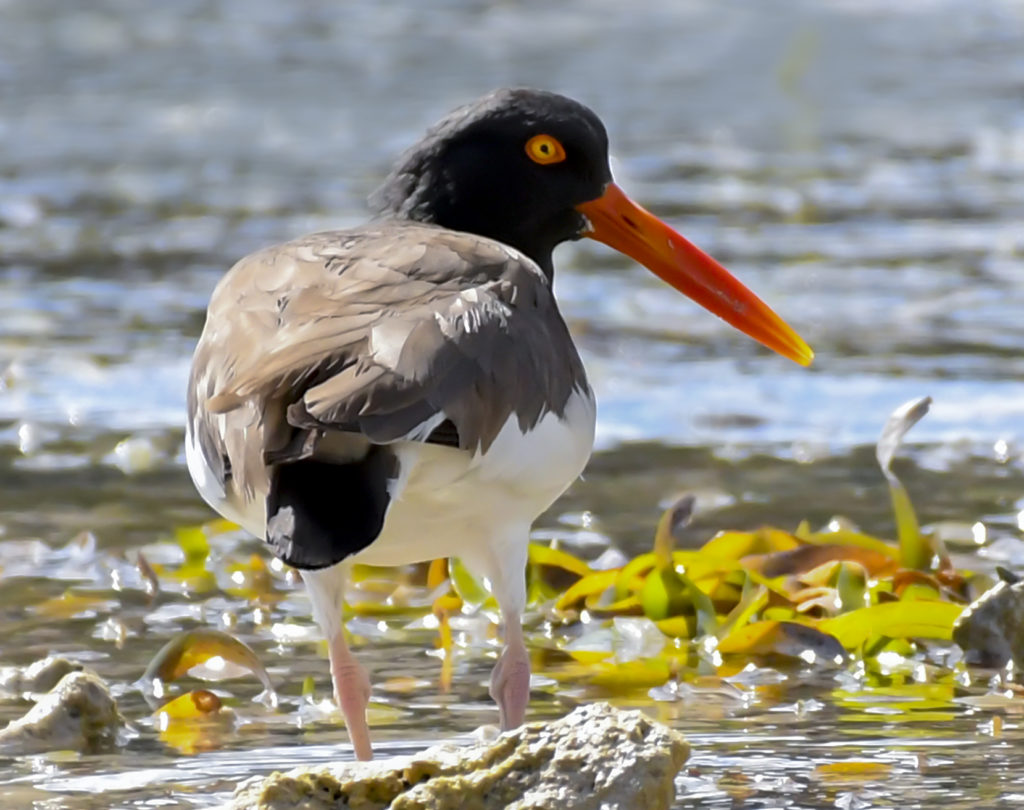
I read that they can open the shells of oysters, clams and mussels, either by cutting the muscles that hold the bivalve shells together, or bashing the shells with their thick bills. They will also eat other shellfish, limpets, sea urchins, starfish and crabs as they walk along saltwater shorelines.
On St. John I have seen some oysters attached to the local mangroves, but I don’t think these birds are interested in them. There are plenty of sea urchins and other shellfish on the beach where they hang out, and Virgin Islands National Park information indicates that locally these birds are called “whelk crackers.”
In places where there are lots of different shorebirds gathered together, the bright color of the oystercatchers’ bills probably helps them find friends and relations. Or potential mates.
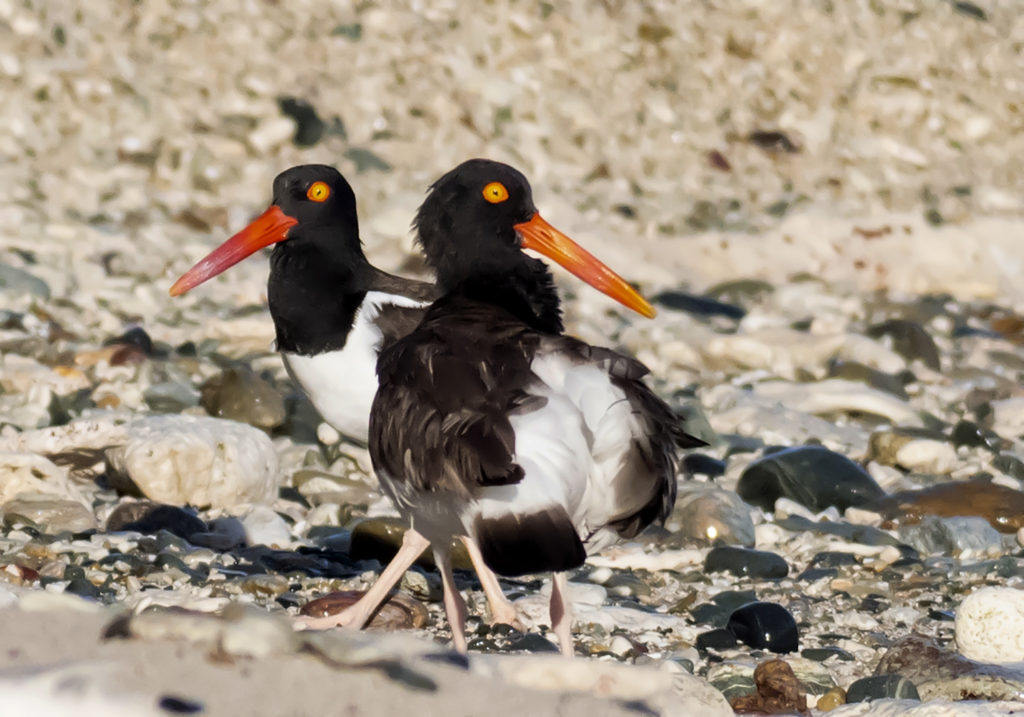
Since their feeding habits limit them to the coastlines, the overall population of American Oystercatchers is not very large, including only about 550 residents in the Caribbean.
Over several years I have not seen more than two oystercatchers together in the Virgin Islands, and I am thinking it is the same pair. They seem to be residents rather than seasonal migrants, and I have observed what looks like courting behavior.
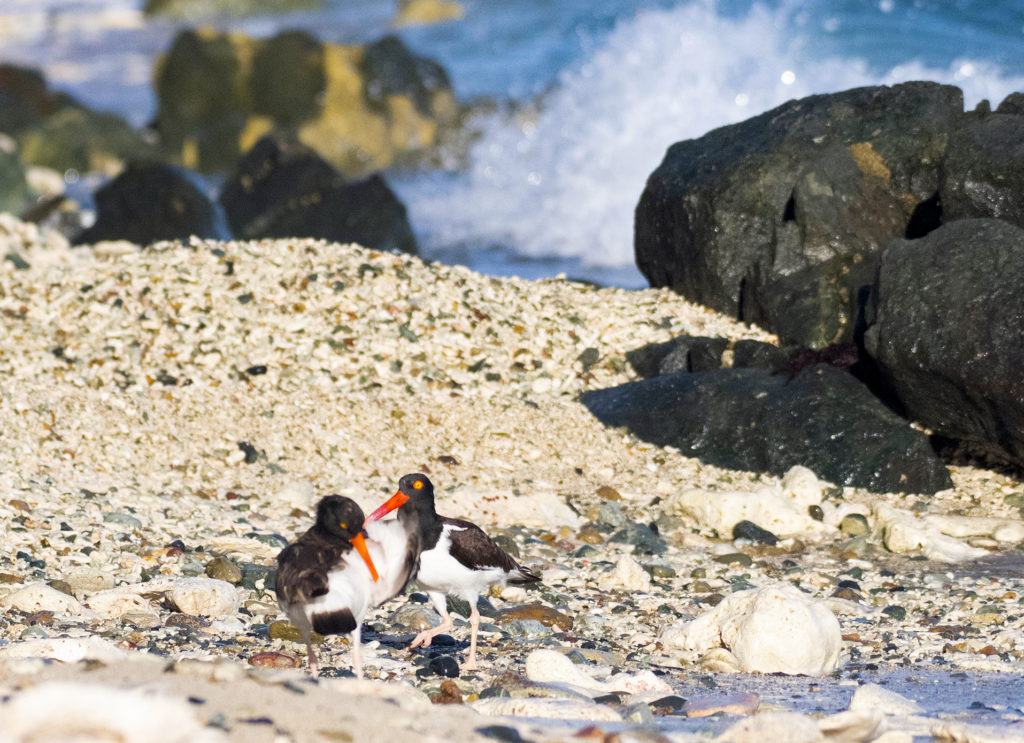
Unfortunately, I have not seen any babies, though they could have been hidden over on the little island, which has some small sandy spots. Oystercatcher nests are just shallow depressions in the sand lined with bits of shell, so the parents have to work hard to protect them from predators.
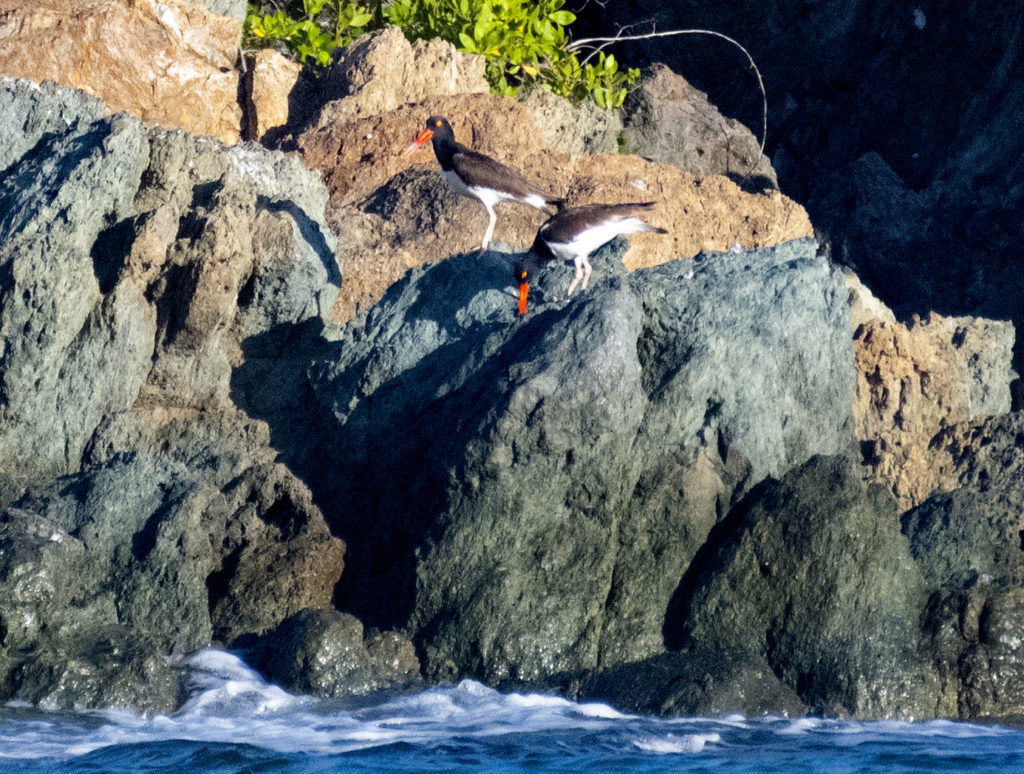
In July this year when I was in New York, I did get to see some American Oystercatcher chicks out near Rockaway Beach. Sections of the public beaches around the city are roped off during breeding season to keep people from walking through nesting areas for oystercatchers, as well as piping plovers, common terns, and black skimmers.
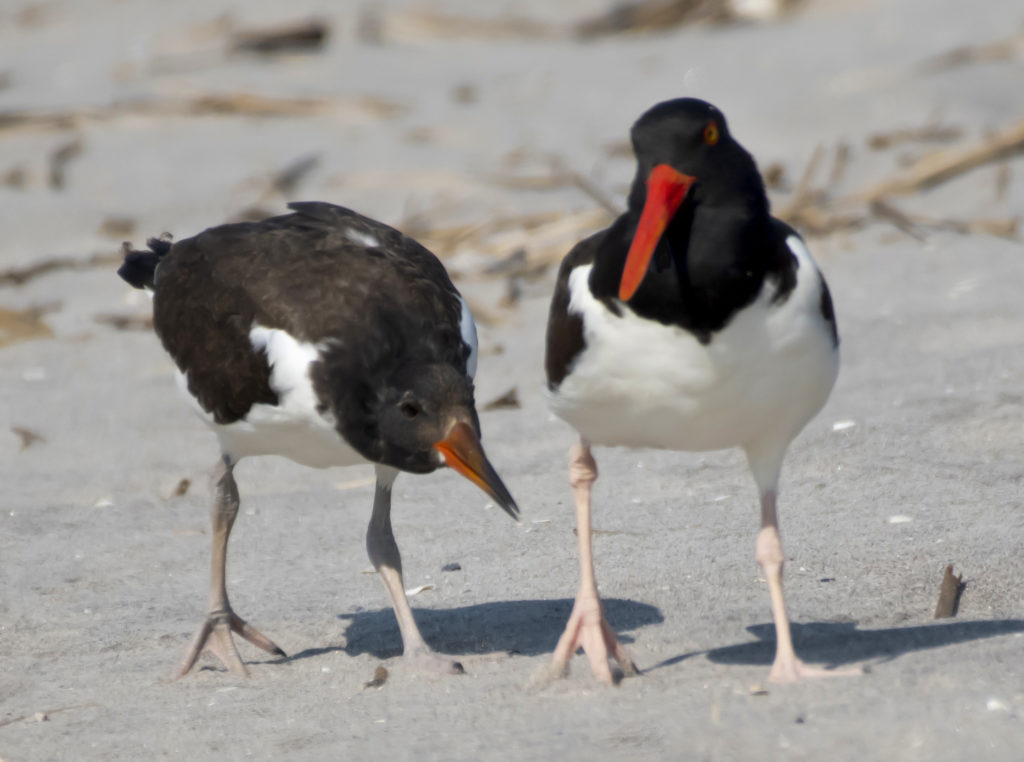
It was late in the nesting season and the chicks were almost grown, but some were still looking to the parents for food because their bills were not yet strong enough to pry open shells. At first the chicks are gray and fuzzy. It takes about two months for them to develop their white and dark “pied” plumage – and even longer for their eyes and bills to match the bright coloring of the adults.
Interestingly, these New York birds did not seem to mind sharing the beach with people, perhaps because of an aggressive public education and protection program. Overall, however, human activity is the main threat to oystercatchers, either through coastal development and destruction of habitats they need to survive, or through disturbance of their nests, including by people’s dogs.
It makes sense, then, that the relatively few resident oystercatchers in the Virgin Islands take advantage of the protection provided by rocky areas and offshore getaway spots.
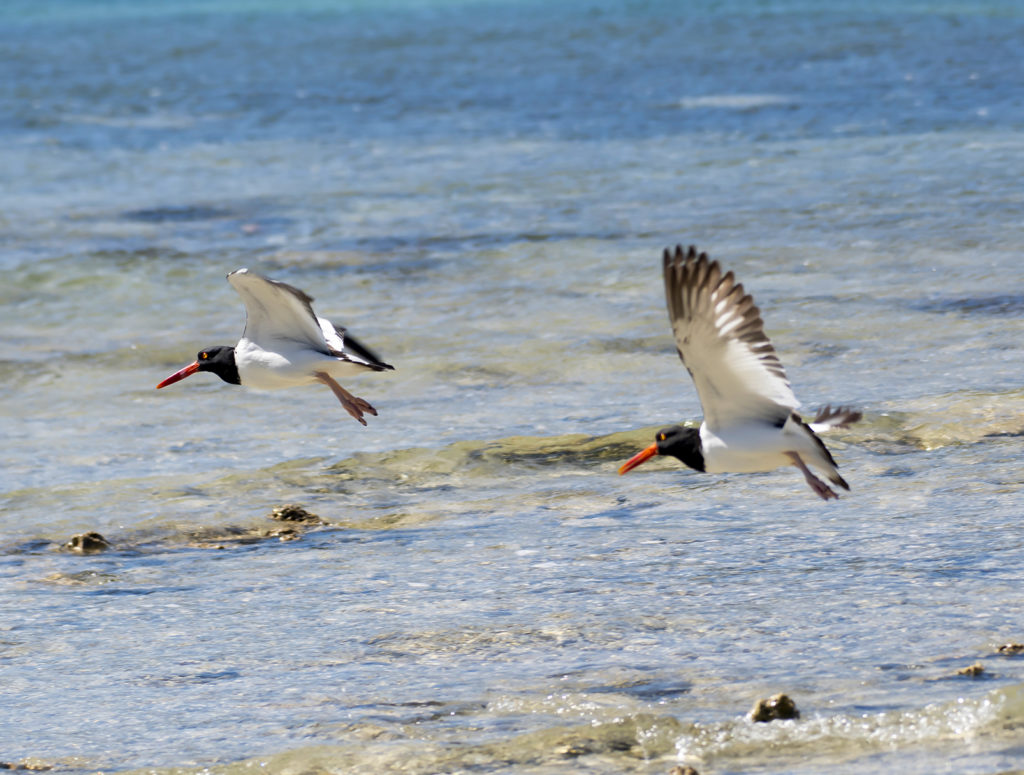
— Gail Karlsson is an environmental lawyer, writer and photographer – author of “The Wild Life in an Island House,” plus the guide book “Learning About Trees and Plants – A Project of the Unitarian Universalist Fellowship of St. John.” See uufstjohn.com/treeproject and gvkarlsson.blogspot.com. Follow her on Instagram @gailkarlsson


